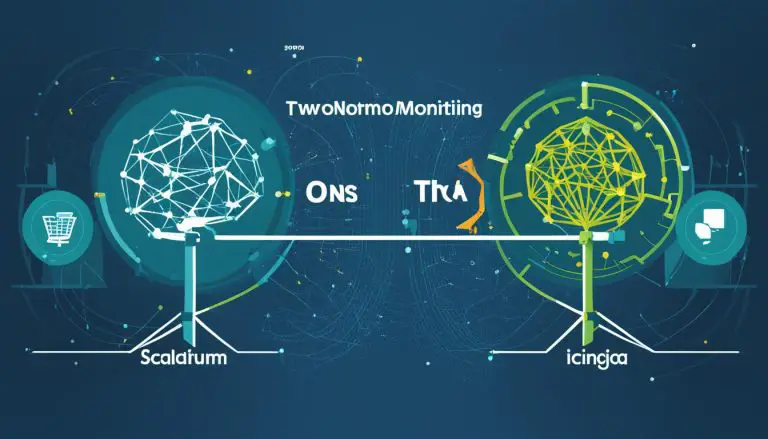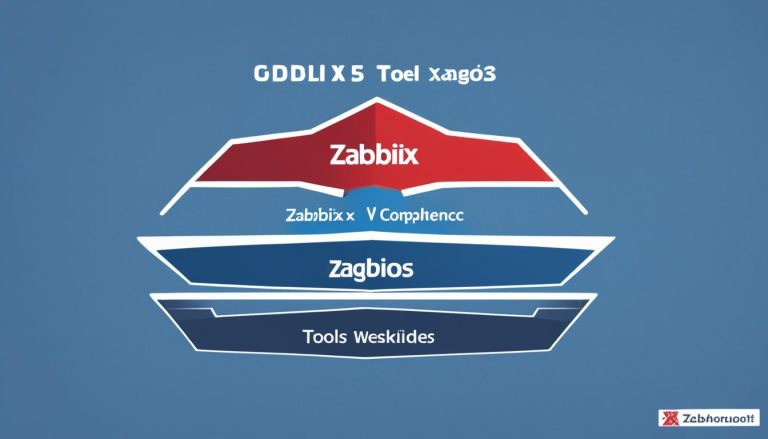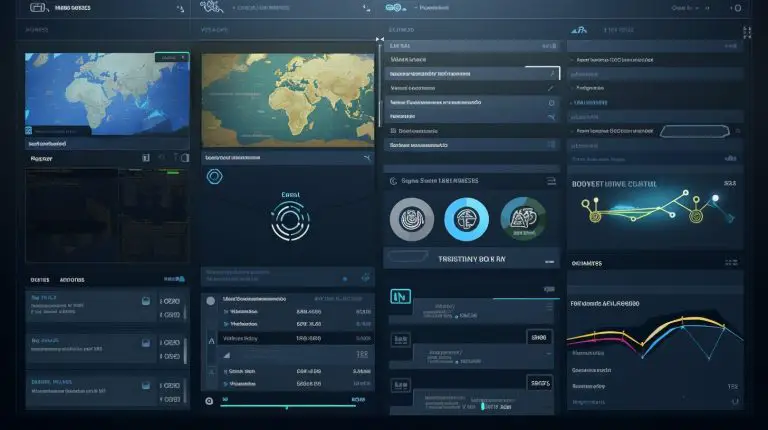Understanding What is Reverse ARP: An In-Depth Look
Reverse Address Resolution Protocol (RARP) is a network protocol used in local area networks (LANs) to map a device’s physical MAC address to its corresponding IP address. In this article, I will provide you with an in-depth explanation of what Reverse ARP is, how it works, and its role in computer networking.
RARP is primarily used by devices that do not have a stored IP address or the capability to assign one. By sending its MAC address to a RARP server, a device can dynamically learn its IP address. The RARP server maps the MAC address to an IP address and returns it to the requesting device.
Although RARP has been largely replaced by more advanced protocols like Bootstrap Protocol (BOOTP) and Dynamic Host Configuration Protocol (DHCP) in modern LANs, it still finds applications in server and data center virtualization, such as for high-availability purposes in VM management platforms like VMware’s vMotion.
Key Takeaways:
- Reverse ARP is a protocol used in local area networks (LANs) to map a device’s MAC address to its IP address.
- RARP allows devices without a stored IP address to dynamically learn their IP address.
- Unlike ARP, which maps an IP address to a MAC address, RARP maps a MAC address to an IP address.
- RARP has been largely replaced by BOOTP and DHCP in modern LANs, but it still has specific use cases in server and data center virtualization.
- RARP played a significant role in the development of address resolution protocols.
How Does RARP Work?
Understanding how Reverse Address Resolution Protocol (RARP) works is essential for grasping the fundamentals of this network protocol. RARP enables a device in a local area network (LAN) to request its IP address by sending its physical MAC address to a RARP server. Let’s dive into the process flow of RARP to get a clearer picture of its inner workings.
When a new RARP-enabled device connects to the network, its RARP client program initiates the process by sending a broadcast request containing its physical MAC address. The RARP server, located on the same LAN as the devices, receives and processes the broadcast request. It then checks its lookup table for a matching MAC address. If a match is found, the RARP server returns the corresponding IP address to the requesting device.
To ensure that the RARP request reaches all devices on the LAN, it is sent as a data link layer broadcast. This broadcast nature of RARP allows devices without a stored IP address or the ability to assign one to dynamically learn their IP address. However, if the device’s MAC address is not found in the RARP database, no IP address is assigned.
Reverse ARP Process Flow:
- The RARP client program of a new device sends a broadcast request containing its physical MAC address.
- The RARP server on the LAN receives and processes the broadcast request.
- The RARP server checks its lookup table for a matching MAC address.
- If a match is found, the RARP server returns the corresponding IP address to the device.
- The RARP request is sent as a data link layer broadcast to reach all devices on the LAN.
- If the device’s MAC address is not found, no IP address is assigned.
| RARP Client Program | RARP Server |
|---|---|
| Sends a broadcast request with its physical MAC address | Receives and processes the broadcast request |
| – | Checks its lookup table for a matching MAC address |
| – | Returns the corresponding IP address to the device |
Understanding the process flow of RARP helps shed light on its functionality in dynamically assigning IP addresses to devices in a LAN. This protocol, although largely replaced by Bootstrap Protocol (BOOTP) and Dynamic Host Configuration Protocol (DHCP) in modern networks, still finds specific use cases in server and data center virtualization. By mapping a MAC address to an IP address, RARP continues to serve essential purposes in certain specialized applications.
Is RARP Obsolete? Alternatives and Use Cases
Reverse Address Resolution Protocol (RARP) has become obsolete for LAN access in modern networks due to the availability of more advanced protocols such as Bootstrap Protocol (BOOTP) and Dynamic Host Configuration Protocol (DHCP). These protocols offer more features and scalability, making them better suited for modern LANs with multiple IP subnets. However, RARP still has specific use cases in server and data center virtualization.
RARP finds renewed usage in scenarios like virtual machine (VM) migration using platforms like VMware’s vMotion. During VM migration, RARP allows the IP address to shift to a backup host, providing high-availability capabilities. This ensures seamless continuity of services during the migration process. RARP also remains relevant in certain specialized applications where devices require pre-assigned IP addresses or lack the ability to store IP addresses locally.
Although RARP is no longer widely utilized in LAN access, it continues to play a role in specific network contexts. The protocol’s ability to facilitate IP address assignment during VM migration and support devices with unique requirements demonstrates its ongoing relevance in certain use cases.
Table: Comparison of Reverse ARP (RARP), BOOTP, and DHCP
| Protocol | Main Functionality | Scalability | Security | Flexibility |
|---|---|---|---|---|
| RARP | Maps MAC address to IP address | Limited | Lack of security mechanisms | Less flexible compared to BOOTP and DHCP |
| BOOTP | Assigns IP addresses and provides extended network services | Scalable for larger networks | Offers security features | Provides advanced network services |
| DHCP | Dynamic IP address assignment and network configuration | Highly scalable | Supports authentication and encryption | Offers extensive flexibility and advanced services |
As shown in the table above, both BOOTP and DHCP offer significant advantages over RARP in terms of scalability, security, and flexibility. However, it’s important to note that RARP still has its place in specialized use cases where these advanced features are not required or supported. Understanding the alternatives to RARP, such as BOOTP and DHCP, enables network administrators to choose the most appropriate protocol for their specific environment and requirements.
How is RARP Different from ARP?
RARP and ARP are two network protocols used for address resolution, but they function in opposite directions. While RARP maps a MAC address to an IP address, ARP maps an IP address to a MAC address.
In RARP, a client sends a broadcast containing its MAC address and requests an IP address. On the other hand, in ARP, the client sends a broadcast containing its IP address and requests a MAC address.
RARP is used when a client knows its MAC address but needs to obtain an IP address, whereas ARP is used when a client knows its IP address but needs to obtain a MAC address.
Furthermore, RARP uses the value 3 for requests and 4 for responses, while ARP uses the value 1 for requests and 2 for responses. Both RARP and ARP operate at the data link layer and are specified in RFC 903 and RFC 826, respectively.
| RARP | ARP |
|---|---|
| Maps MAC address to IP address | Maps IP address to MAC address |
| Client sends MAC address and requests IP address | Client sends IP address and requests MAC address |
| Value 3 for requests and 4 for responses | Value 1 for requests and 2 for responses |
The ARP Family: RARP, InARP, Proxy ARP, and Gratuitous ARP
The ARP family consists of several network protocols that play vital roles in address resolution and network communication. These protocols include Reverse Address Resolution Protocol (RARP), Inverse ARP (InARP), Proxy ARP, and Gratuitous ARP. Each protocol has unique features and functions, contributing to the overall efficiency and effectiveness of network operations.
RARP: Mapping MAC Addresses to IP Addresses
RARP, or Reverse Address Resolution Protocol, is a protocol that is used to map a MAC address to an IP address. While traditional ARP maps an IP address to a MAC address, RARP operates in the opposite direction. RARP is particularly useful for devices that need to obtain IP addresses but lack the ability to store them locally. By sending a broadcast request containing its MAC address, a RARP-enabled device can request an IP address from the RARP server on the local LAN.
InARP: The Inverse of ARP
Inverse ARP, or InARP, is a protocol that performs the reverse function of traditional ARP. InARP uses a MAC address to find the corresponding IP address. This protocol is commonly used in Frame Relay and Asynchronous Transfer Mode (ATM) networks, where devices need to obtain IP addresses for establishing connections. InARP eliminates the need for manual IP address configuration and enhances the efficiency of network communication.
Proxy ARP: Resolving IP Addresses across Network Segments
Proxy ARP enables devices on different network segments within the same IP network to resolve IP addresses to MAC addresses. This protocol allows devices on separate LAN segments to communicate with each other by routing packets through an intermediate device acting as a proxy. Proxy ARP simplifies network configuration and enables seamless communication between devices that are not directly connected.
Gratuitous ARP: Broadcasting MAC Addresses
Gratuitous ARP is a protocol that broadcasts a device’s MAC address to the network. This protocol is commonly used during boot-up or when devices need to update their IP addresses. By broadcasting their MAC addresses, devices can announce their presence to the network and ensure that other devices have accurate and up-to-date information for communication purposes. Gratuitous ARP plays a crucial role in maintaining network connectivity and facilitating efficient data transmission.
The ARP family of protocols, including RARP, InARP, Proxy ARP, and Gratuitous ARP, are essential components of modern networks. These protocols enable efficient address resolution, enhance network communication, and ensure seamless connectivity between devices. Understanding the different protocols in the ARP family is vital for network administrators and engineers to design and maintain robust and reliable networks.
History and Development of RARP
Reverse Address Resolution Protocol (RARP) has a rich history dating back to its proposal in 1984 by the university Network group. It was initially developed to address the needs of diskless workstations, particularly those manufactured by Sun Microsystems. These diskless workstations lacked the ability to store IP addresses locally, and RARP provided a solution by dynamically assigning IP addresses to these devices.
The development of RARP was instrumental in the early days of computer networking, as it paved the way for more advanced protocols like Bootstrap Protocol (BOOTP) and Dynamic Host Configuration Protocol (DHCP). While RARP has become obsolete for LAN access in modern networks, its legacy lives on in server and data center virtualization scenarios, such as high-availability VM management platforms like VMware’s vMotion.
Despite its limitations, RARP’s historical significance and contribution to the evolution of address resolution protocols cannot be overlooked. It played a vital role in enabling the growth and expansion of computer networks, driving innovation in IP address assignment and network configuration.
Table: A Brief Timeline of RARP
| Year | Development |
|---|---|
| 1984 | RARP proposed by the university Network group |
| 1985 | RARP developed to support Sun Microsystems’ diskless workstations |
| 1990s | RARP gradually replaced by more advanced protocols like BOOTP and DHCP |
| Present | RARP still utilized in server and data center virtualization scenarios |
Issues and Disadvantages of RARP
RARP, while having its uses in certain specialized applications, comes with several limitations and disadvantages that make it less suitable for modern networks. These issues include:
- Limited Scalability: RARP relies on broadcasting to communicate with clients, which can lead to network congestion and performance issues in larger networks.
- Security Concerns: RARP lacks security mechanisms like authentication and encryption, making it vulnerable to attacks such as spoofing and denial of service.
- Lack of Flexibility: Compared to alternative protocols like BOOTP and DHCP, RARP offers limited flexibility and cannot provide advanced network services.
- Limited Support: RARP is not widely supported in modern operating systems and network devices, making its implementation and maintenance challenging.
- Compatibility Issues: With the introduction of newer protocols like IPv6, compatibility issues may arise when using RARP in certain network contexts.
While RARP served as an important protocol in the early days of computer networking, its limitations and the availability of more advanced alternatives have rendered it largely obsolete for LAN access in modern networks.
However, it’s worth noting that RARP still finds use in specific scenarios such as server and data center virtualization, where its unique capabilities, such as IP address shifting during virtual server migration, can provide high-availability functionalities.
Table: Comparison of RARP and ARP
| RARP | ARP |
|---|---|
| Maps MAC address to IP address | Maps IP address to MAC address |
| Uses broadcast request containing MAC address | Uses broadcast request containing IP address |
| Value 3 for requests, 4 for responses | Value 1 for requests, 2 for responses |
| Used when client knows MAC address and needs IP address | Used when client knows IP address and needs MAC address |
| Operates at the data link layer | Operates at the data link layer |
Conclusion
In conclusion, Reverse Address Resolution Protocol (RARP) is a protocol used in computer networking to map a MAC address to an IP address. Although RARP has become obsolete for LAN access in modern networks, it still has specific use cases in server and data center virtualization. It played a significant role in the development of address resolution protocols and provided the foundation for newer protocols like BOOTP and DHCP.
Understanding RARP and its differences from ARP can enhance our knowledge of network protocols and their functionalities. While RARP’s scalability, security concerns, lack of flexibility, limited support, and compatibility issues limit its usefulness in modern networks, it remains relevant for specialized applications where devices require pre-assigned IP addresses or lack the ability to store IP addresses locally.
Overall, RARP’s historical significance and its continued utilization in specific scenarios make it an important protocol to learn about in the context of networking.
FAQ
What is Reverse ARP?
Reverse ARP (RARP) is a protocol used in computer networking to map a device’s physical MAC address to its corresponding IP address.
How does RARP work?
When a device without a stored IP address connects to a network, its RARP client program sends a broadcast request containing its MAC address and requests an IP address. The RARP server, located on the same LAN, processes the request and returns the corresponding IP address to the device.
Is RARP obsolete? What are the alternatives and use cases?
RARP has been largely replaced by DHCP and BOOTP in modern LANs. However, RARP still finds usage in server and data center virtualization, especially for high-availability purposes in VM management platforms like VMware’s vMotion.
How is RARP different from ARP?
RARP and ARP are both address resolution protocols, but they function in opposite directions. RARP maps a MAC address to an IP address, while ARP maps an IP address to a MAC address.
What is the ARP family?
The ARP family includes RARP, InARP, Proxy ARP, and Gratuitous ARP. Each protocol serves a different purpose in address resolution in various network scenarios.
What is the history and development of RARP?
RARP was proposed in 1984 by the university Network group to provide IP addresses to diskless workstations, particularly those from Sun Microsystems.
What are the issues and disadvantages of RARP?
RARP has scalability concerns, lacks security mechanisms, offers limited flexibility, has limited support in modern systems, and may have compatibility issues with newer protocols like IPv6.
What is the conclusion about RARP?
RARP played a significant role in the development of address resolution protocols and offered valuable functionality in its time. However, it has become obsolete for LAN access in modern networks, with alternatives like DHCP and BOOTP providing more advanced features and scalability.
- About the Author
- Latest Posts
Matthias Böhmichen is the founder of howto-do.it . He is using Linux since 1991 and fell in love with windows a few years later. He likes to discover new technologies, especially hard- and software.






